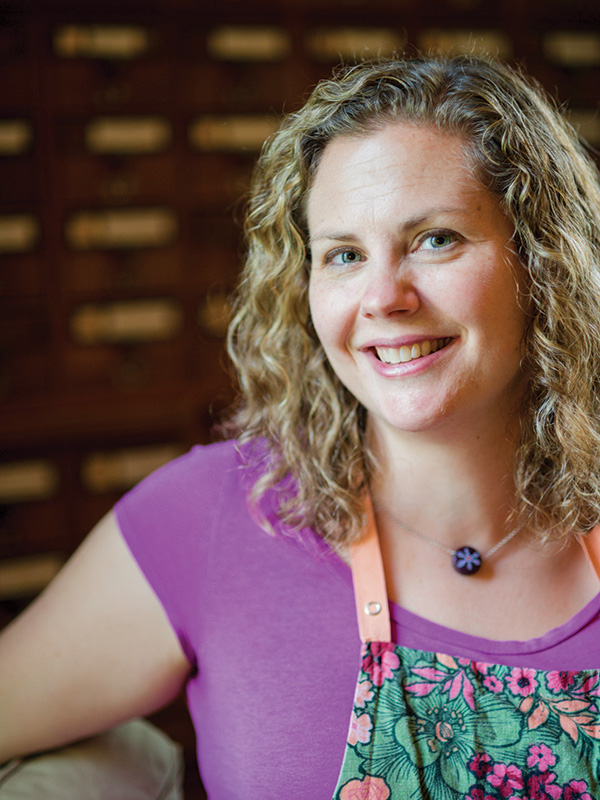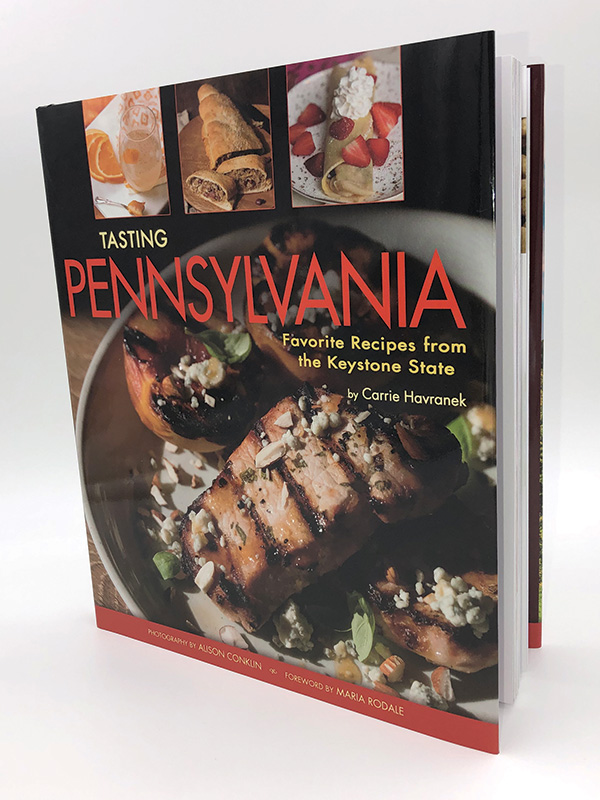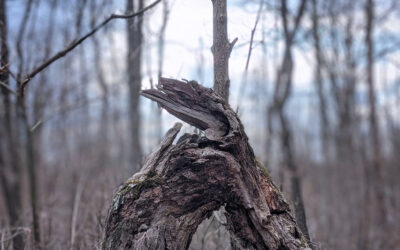Cooking the Commonwealth
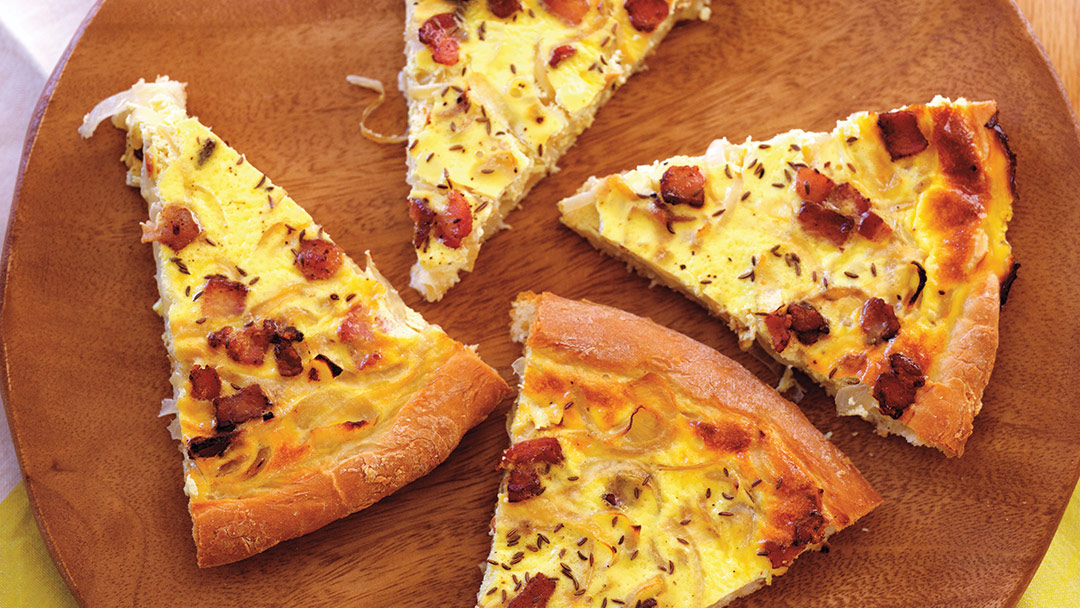
What’s the most quintessential Pennsylvania food? If you answered soft pretzels, or scrapple, or cheese steak, you’re certainly not wrong. But Carrie Havranek, author of Tasting Pennsylvania, insists that there’s much more on the table across the Commonwealth. We caught up with the food writer and cookbook author to talk about her book and why Pennsylvania’s culinary scene deserves more respect.
What is your connection to the Pennsylvania food scene?
I grew up in New Jersey, just 10 or 15 miles across the border from Pennsylvania. So the first immediate connection was going to visit my mom’s great aunt Charlotte who lived in Amish country. She was not Amish herself but she was Pennsylvania German, and she was very friendly and very close to an Amish family. She made everything from scratch. She used to put Red Hots in applesauce, which as a kid I thought was the funniest thing ever. Her peach pie was amazing, and in fact I just adapted it for work and it’s now living on the internet. She made bread from scratch. There was always a lot of really good homemade jam. I just remember visiting those families and how simple and straightforward it seemed and how food and agriculture was the center of everything.
That was probably my first introduction to what people think of as a quintessential Pennsylvania food experience. But I grew up as a teenager going to concerts in Philadelphia, eating soft pretzels on the street corner, thinking New York ones were superior (shh, don’t tell) until I had the Amish soft pretzel, which is way better and sweeter and softer. And taking day trips up and down the Delaware, to these little towns with restaurants or fun ice cream places. I don’t know if it’s still in New Hope but there was this one place that had rose petal ice cream, and this was way before ice cream got culinary.
What is your background in food writing?
I got my master’s from NYU and wanted to be a music critic. The program was about cultural writing. I did that for a little bit and then it led to travel writing and that’s how the food came in. That was about 10 years ago and I just was basically like OK this is the thing. This was the thing that I never get bored of talking about or wondering about or learning about. Everything I wrote about was always within the realm of culture in some way. I wrote for Edible Philly, Lucky Peach, The Kitchn. My day job is with a website called Simply Recipes. I was well-prepped to work on this book between my travel writing experience and writing for another regional publication here, Lehigh Valley Style, and writing for Edible Philly for a number of years. And I found that I either knew the right person to contact at a restaurant or I was one or two degrees at most separated from most of the places that I wanted to contact.
How did you choose the recipes to include in the book?
I did some crowdsourcing. My editor and I came up with a list of what we thought were the things that should be in there. And then I went through and I tried to find or think of places that were the best example for the source. So, for example, I got a shoofly pie recipe from the Smucker family in Lancaster County. That was perfect. I wanted to, of course, get a cheesesteak recipe from either Pat’s or Geno’s, but of course that was not going to happen, so I had to find another really good award-winning modern cheesesteak.
But the state of things is much more diverse than that. My goal was to say, Yes, we have this history and it’s these things. But even those things that you think are Pennsylvania are more nuanced.
And of course all the wonderful food from the farm-to-table Renaissance-type places that we have all over the place, in the little college towns and the bigger cities. Invariably those people gave me lots of beet, mushroom and pork recipes, as you would expect being a Pennsylvanian.
I wanted to make sure that a contemporary story was being told, so that’s why I tried to go after as many marquee name chefs as well because we have tons of great restaurants in this state.
You say that Pennsylvania is the new California. What do you mean by that?
I think that people overlook us. One of the things that I really came to understand in the last 10 to 15 years of living here as an adult who cooks, has kids, who works in this business, who volunteers extensively at the Easton Farmer’s Market (which, P.S., is the oldest open-air, continuously operating farmer’s market in the country, dating to 1752)… Spending time with these people, seeing the things that they’re doing, seeing how many small farms we have, seeing how many more of them are being started by women, seeing how much people still really do live according to the land. We will never have avocados. We will never have artichokes. We will never have citrus trees, so we will never have the sustainable all-year-round food culture that California does, but damned if we’re not as good as New York State or Vermont. There’s a growing appreciation and reverence for what is produced here just based on the sheer number of people that you see at farmer’s markets on the weekends.
I don’t know what people are thinking of when they’re thinking of Pennsylvania other than Pa. Dutch and Amish food and Ben Franklin and maybe the Pittsburgh Steelers and Penn State definitely. Maybe they don’t know that we produce all those mushrooms. Maybe they don’t realize how the brewing culture and the craft spirits culture has a huge history in this state and is booming. We’ve got some stuff happening here! It’s awesome. We should have some pride.
Were there any surprises for you in working on this book?
One of my favorite surprises of the entire book is the Pittsburgh salad with grilled chicken and french fries on it. It gets what you want to eat and what you should eat and then it puts it together. It’s completely genius.
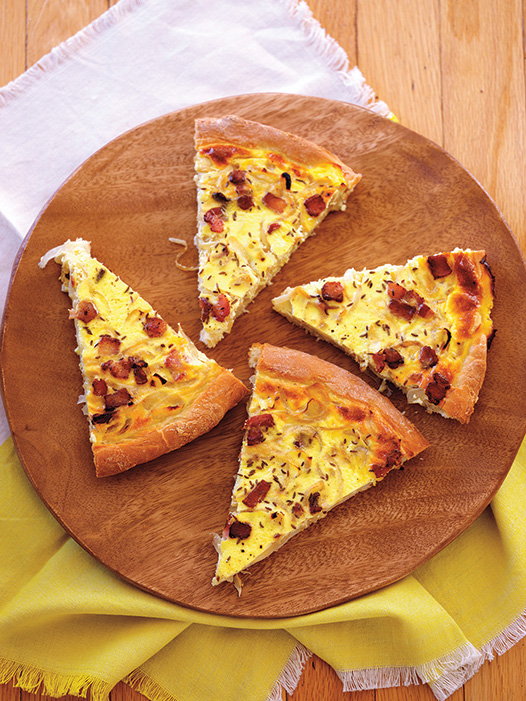
Pennsylvania Dutch Onion Tart
(Zwiwwelkuche) | Serves 10 to 16
This recipe comes from William Woys Weaver, a food historian and author who’s written extensively about Pennsylvania Dutch culture. Havranek first met him at a dinner at the James Beard House featuring Pennsylvania cuisine, and she loves this recipe for its simplicity.
“It kind of looks like pizza, but it tastes like a quiche with a pizza crust,” says Havranek. “And it’s delicious. It was a common meal for farm hands whenever they took a break, and you can see why — it’s made from simple ingredients that you have on hand on a farm. I wanted to have those kinds of recipes in the book too, to show a more nuanced, maybe not as obvious part of culinary history in Pennsylvania.”
Yeast-raised butter crust
1¾ teaspoons active dry yeast
1½ cups water, lukewarm
3½ cups organic white bread flour
½ teaspoon salt
½ cup (1 stick) butter, cold, chopped
3 large egg yolks
Onion filling
6 tablespoons butter or olive oil
4 cups thinly sliced onions
⅔ cup diced country-style slab bacon
Salt and black pepper
4 large eggs
1 cup sour cream or plain yogurt
1 teaspoon caraway seeds
For the yeast-raised butter crust:
Proof the yeast in the water in a small bowl. In a separate, deep bowl, sift the flour and salt together. Add the butter and rub the mixture through a colander to form fine crumbs, or process in a food processor. Return the crumbs to the bowl and make a well in the center. Beat the egg yolks into the yeast and pour the mixture into the well in the crumbs. Stir and work into a stiff dough. Knead on a well-floured surface until the dough is soft and spongy and no longer sticks to the fingers, 5 to 10 minutes. Cover and set aside in a warm place to rise until double in bulk, about 1½ hours.
For the onion filling:
While the dough is rising, add the butter or oil to a sauté pan, then the onions. Cover and sweat onions over medium heat until soft, about 5 minutes. Brown the bacon in a separate skillet until golden, then drain off the fat and reserve the bacon.
To assemble:
Preheat the oven to 375 degrees F. Press down the dough and roll it ¼ inch thick. Line a shallow baking pan or 14-inch round pizza pan with the dough. Roll the dough edge up to form a rim about 1 inch high. Let the crust rest for about 15 minutes, then spread the sweated onions and cooked bacon evenly over the surface. Sprinkle with salt and pepper to taste.
Beat the eggs until frothy and the color of lemons, then combine with the sour cream or yogurt. Drizzle over the onions and bacon, then scatter caraway seeds over the top. Bake until the egg filling has set and begun to turn golden brown on the surface, 30 to 40 minutes. Serve hot or at room temperature.
More from Provisions magazine
Letter from the Editor
t’s hard to know how to start a letter right now — nothing seems big or small enough. Our world has both drastically shrunk to our own homes and reached a new level of global connectivity. Anxiety and stress have spiked (and stayed there), but...
Nowruz 1399: The Ghosts of New Years Past and Future
When I proposed writing a piece on the Persian New Year, which coincides with the spring equinox and which we celebrate every year in homage to my husband’s Iranian ancestry, I was excited. We have been renovating our house — the work is still ongoing and many things...
Supporting Local Food While Social Distancing in Centre County
As the oft-quoted Mr. Rogers’ quote instructs, “Look for the helpers.” Local businesses and organizations are making sure our community doesn’t go hungry.

